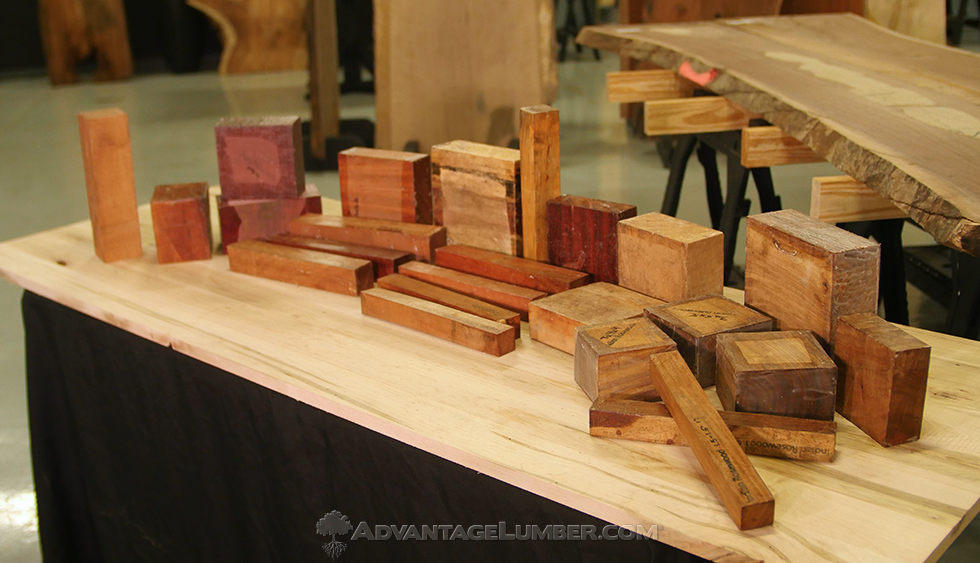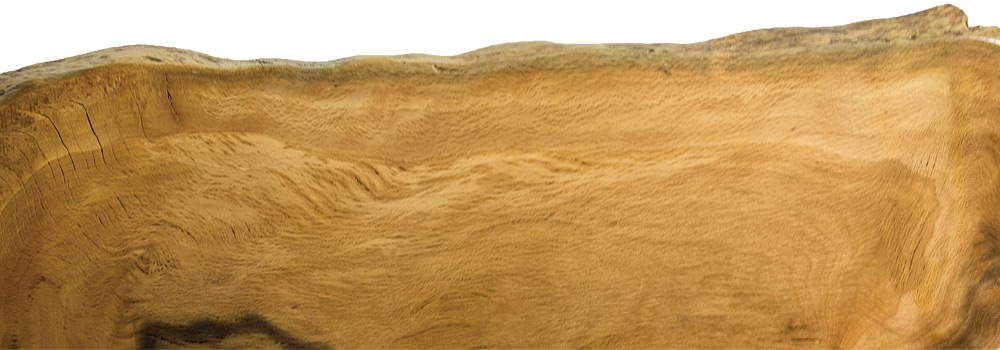- Scientific Name
- Quercus virginiana
- Common Name(s)
- Live Oak, Southern Live Oak
- Distribution
- Southeastern United States
- Average Dried Weight
- 63 lbs/ft3 (1,000 kg/m3)
- Specific Gravity
- Basic: .80, 12% MC: 1.00
- Janka Hardness
- 2,680 lbf (12,920 N)
- Modulus of Rupture
- 18,220 lbf/in2 (125.6 MPa)
- Elastic Modulus
- 1,960,000 lbf/in2 (13.52 GPa)
- Crushing Strength
- 8,810 lbf/in2 (60.8 MPa)
- Shrinkage
- Radial: 6.6%, Tangential: 9.5%, Volumetric: 14.7%, T/R Ratio: 1.4
- Appearance
- Has a light to medium brown color, though there can be a fair amount of variation in color. Conversely, Red Oak tends to be slightly redder, but is by no means a reliable method of determining the type of Oak.
- Texture
- Grain is straight, with a coarse, uneven texture. May have irregular grain depending on growing conditions of the tree. Endgrain: Diffuse-porous; exclusively solitary; large to very large pores arranged radially, few; tyloses abundant; parenchyma vasicentric, diffuse-in-aggregates; very wide aggregate rays and narrow rays, spacing normal.
- Rot Resistance
- Live Oak has been rated as having very good resistance to decay, and has been used frequently in ship and boatbuilding.
- Workability
- Easy to glue, and takes stain and finishes very well. Though, due to its incredible density, (especially for an oak), Live Oak is harder to work with than other species of the Quercus genus.
- Odor
- Has a tell-tale smell that is common to most oaks. Most find it appealing.
- Allergies/Toxicity
- Although severe reactions are quite uncommon, oak has been reported as a sensitizer. Usually most common reactions simply include eye and skin irritation, as well as asthma-like symptoms.
- Pricing/Availability
- Seldom available commercially, Live Oak may only be available from local sawmills within its native range. Expect prices to be higher than most other domestic species.
- Sustainability
- This wood species is not listed in the CITES Appendices or on the IUCN Red List of Threatened Species.
- Common Uses
- Cabinetry, furniture, interior trim, flooring, boatbuilding, barrels, and veneer.
- Comments
- Live Oak shares many of the same traits as White Oak (Quercus alba), though it is diffuse porous and readily separable from white oaks on the basis of anatomy. Historically, it has been used in shipbuilding, and was even used in the construction of the USS Constitution, which was fittingly named “Old Ironsides”—an incontrovertible testament to the wood’s toughness.



